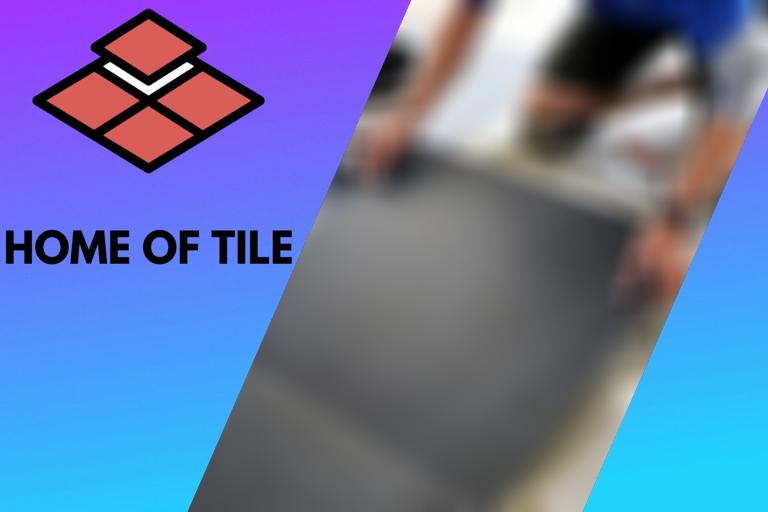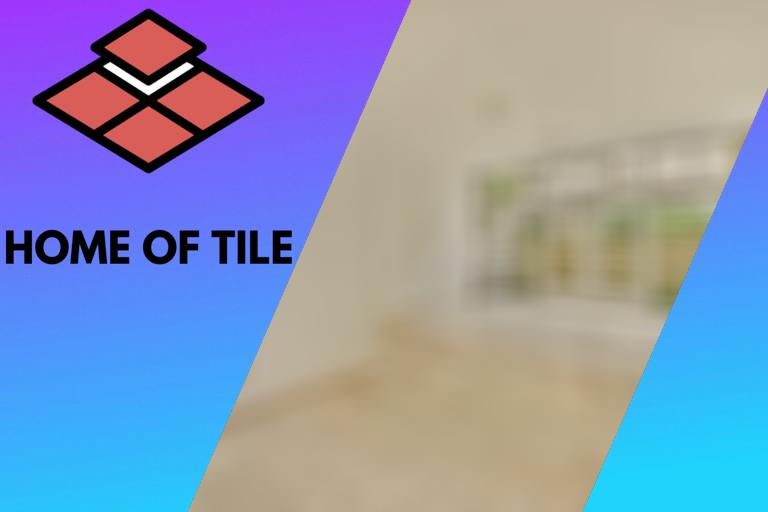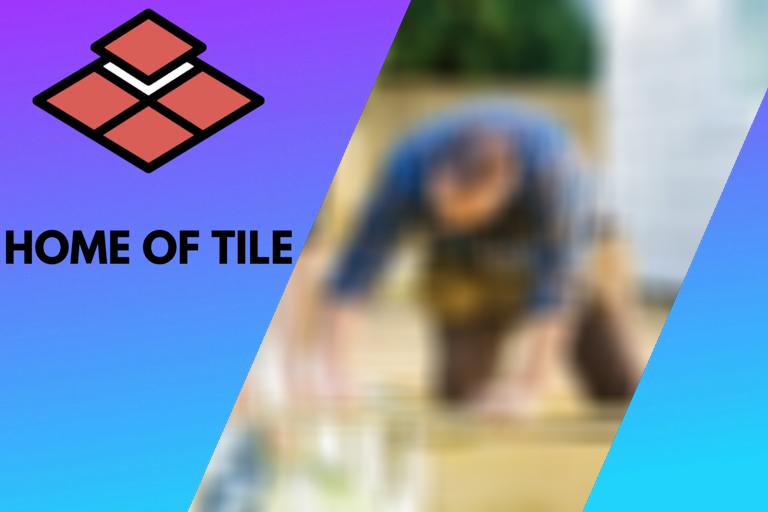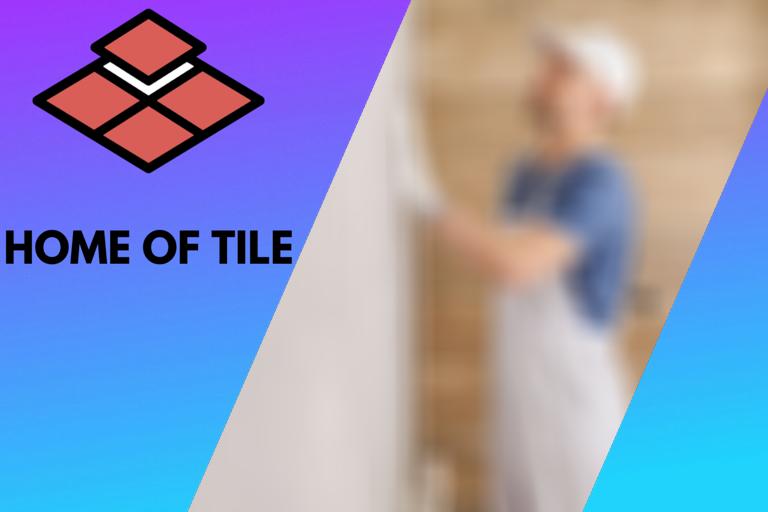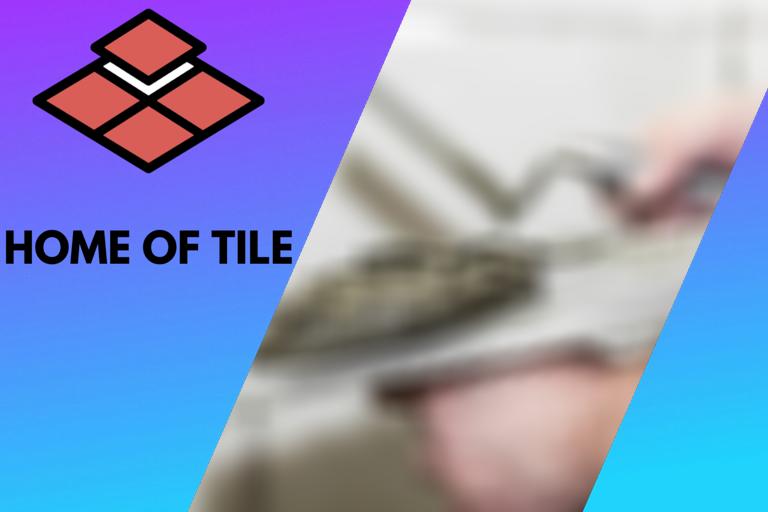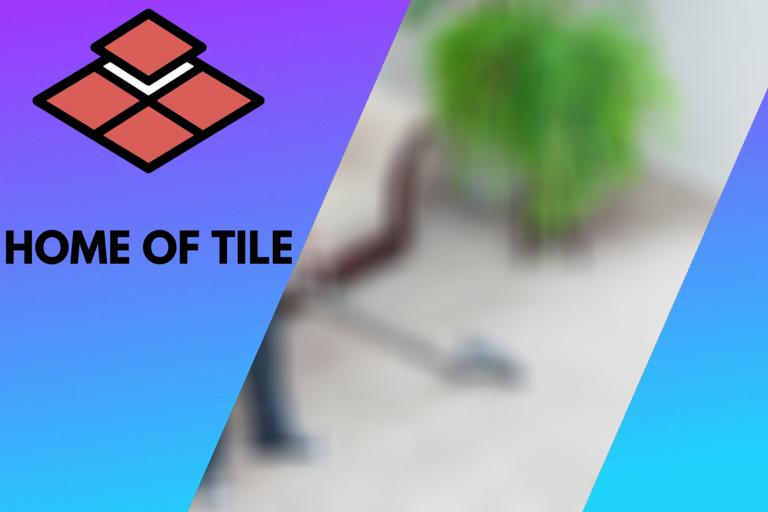Can You Tile Over Wallpaper, 25 Things you Should Know
Are you looking to revamp your space without removing that old wallpaper? Tiling over a wallpaper might just be the solution you’re searching for! This post will delve into the pros and cons and useful tips and tricks to successfully tile over wallpaper.
Can you tile over a wallpaper:
Tiling over wallpaper is technically possible and offers advantages such as time and cost savings and minimal wall damage. However, drawbacks include poor adhesion, mold and mildew growth risks, and difficulties achieving a professional finish.
Careful assessment of wallpaper condition and utilizing best practices for installation, like sealing the wallpaper and using tile backer boards, are essential to ensure success. Consult professionals if unsure about any aspect of the process.
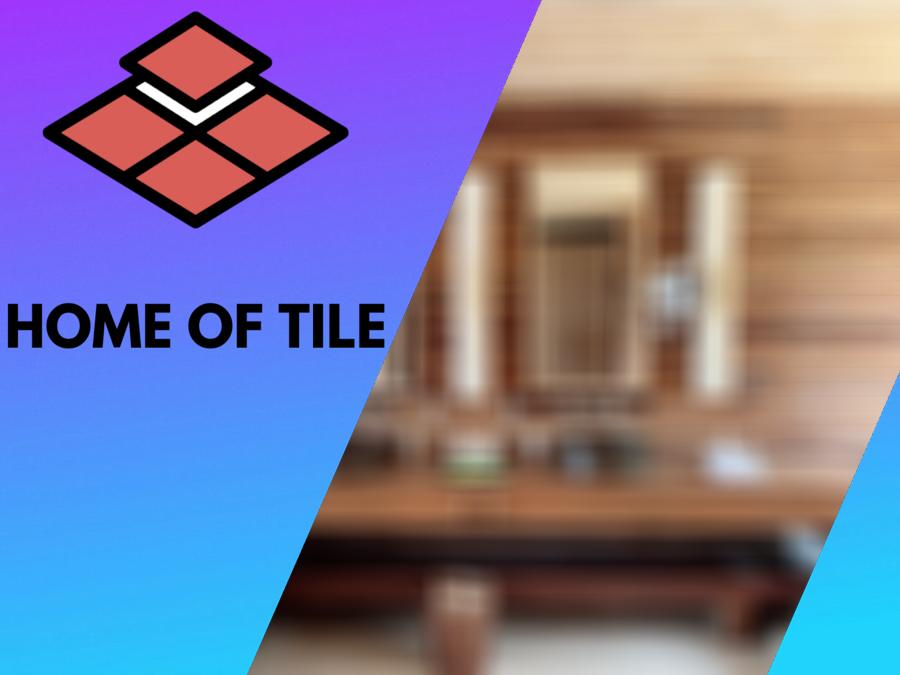
Dive into this comprehensive guide that explores the possibility of tiling over wallpaper. Learn about the pros and cons, preparation methods, and essential tips to ensure a successful and durable outcome for your next remodeling project. Happy tiling!
Contents
- 1 Is it Possible to Install Tiles Over Wallpaper?
- 2 Is It Advisable to Apply Wallpaper Before Installing Tiles?
- 3 Is it Possible to Install Tiles Over Painted Walls?
- 4 Is it Possible to Install Tiles Over Textured Walls?
- 5 Is it Necessary to Remove Old Wallpaper Before Installing New Wallpaper?
Is it Possible to Install Tiles Over Wallpaper?
Tiling over wallpaper is a topic that often sparks debate among homeowners and professionals alike. While it’s technically possible to tile over wallpaper, several factors must be considered before making this decision.
We’ll explore the pros and cons of tiling over wallpaper and provide practical tips for achieving a successful result.
• Pros of Tiling Over Wallpaper
There are some potential advantages to tiling over wallpaper, which might make it appealing to certain homeowners:
– Time and Cost Savings
Removing wallpaper can be a labor-intensive and time-consuming task, particularly if the wallpaper has been on the wall for a long time. It might also require professional help if you’re dealing with stubborn adhesive or multiple layers of wallpaper.
Tiling directly over the wallpaper allows you to skip this step and save time and money.
– Minimal Damage to Walls
If the wallpaper is well-adhered, tiling over it can minimize damage to the underlying walls. This can be particularly beneficial in older homes or rental properties where you’d like to preserve the wall’s integrity as much as possible.
• Cons of Tiling Over Wallpaper
Despite its potential advantages, there are some significant downsides to tiling over wallpaper:
– Poor Adhesion
One of the primary concerns with tiling over wallpaper is the potential for poor adhesion between the tile, adhesive, and wallpaper. This can result in tiles not being securely attached to the wall, a recipe for disaster, as they will likely slide or fall over time.
– Mold and Mildew Growth
Another issue with tiling over wallpaper is the potential for trapped moisture between the layers of material. Since wallpaper can act as a vapor barrier, any dampness in the wall or adhesive may lead to mold or mildew growth, which can harm your home’s aesthetics and health.
– Difficulty in Achieving a Professional Finish
Even if your wallpaper is perfectly smooth and in good condition, tiling over it can be challenging. You’ll need extra care to ensure tiles are laid level and evenly, as any imperfections in the wallpaper may show through.
• Evaluating the Suitability of Wallpaper for Tiling
Before deciding to tile over wallpaper, it’s essential to evaluate the condition and type of wallpaper you’re dealing with:
– Analyze the Wallpaper’s Adhesion
The most critical factor in determining the feasibility of tiling over wallpaper is the wallpaper’s adhesion to the wall. If the wallpaper is peeling, bubbled, or poorly adhered, it’s not a suitable surface for tiling.
– Assess the Wallpaper’s Smoothness
Textured or patterned wallpapers will create an uneven surface for tiles. If your wallpaper isn’t smooth and uniform, tiling over it will likely result in a poorly finished look.
– Check for Vinyl or Moisture-Resistant Wallpaper
Vinyl or moisture-resistant wallpapers can create a vapor barrier, increasing the risk of mold and mildew growth behind your tiles. If your wallpaper falls into this category, removing it before proceeding is best.
• Best Practices for Tiling Over Wallpaper
If you’ve determined that your wallpaper is suitable for tiling, follow these best practices to increase the chances of a successful installation:
– Clean the Wallpaper Surface
Before tiling, ensure the wallpaper is clean and free of grease, dust, and debris. Use a mild detergent and water to clean the surface, and allow it to dry thoroughly.
– Seal the Wallpaper
Applying a waterproof primer or sealer to the wallpaper can help improve adhesion between the tile adhesive and the wallpaper. Depending on the product, you may need to let it dry for 24 hours before tiling.
– Choose the Right Adhesive
Select a tile adhesive designed for non-porous surfaces, as these will provide a more robust bond when tiling over wallpaper. Some adhesives are specifically formulated for tiling over existing coverings.
Consult an expert in your local hardware store for recommendations based on your specific situation.
– Use Tile Backer Boards
If you’re concerned about adhesion or moisture issues, consider installing tile backer boards over your wallpaper before tiling. These boards provide a rigid, stable, and waterproof surface to install your tiles.
• Conclusion
While tiling over wallpaper is technically possible and has advantages, doing so comes with risks and challenges that may outweigh these benefits. Ultimately, assessing the condition of your wallpaper and carefully following best practices for installation will be key in determining whether this method is appropriate for your situation.
Always consult a professional if you’re uncertain about any aspect of the tiling process.
Scenario | Possible | Recommended |
|---|---|---|
Non-textured, Non-vinyl Wallpaper | Yes | No |
Textured Wallpaper | No | No |
Vinyl Wallpaper | No | No |
Removed Wallpaper and Properly Prepared Surface | Yes | Yes |
Is It Advisable to Apply Wallpaper Before Installing Tiles?
The decision to wallpaper before tiling often involves multiple factors, such as design preferences, budget, and project timeline. We will explore various aspects involved in the decision-making process, and I will offer expert insights and recommend the best approach depending on your circumstances.
• Advantages of Wallpapering Before Tiling
– Easier Installation
Applying wallpaper before tiling gives you unrestricted access to the wall surfaces, making it easier to align your design and achieve smoother results. Furthermore, with no tile work to navigate through, you can install the wallpaper without needing to trim or customize sections to fit around fixtures or edges.
– Reducing Damage Risks
Preparing the room for wallpapering can occasionally cause a mess, particularly when using wallpaper paste. By completing the wallpapering process first, you prevent the risk of damaging your newly-installed tiles, which could occur when removing excess paste or other debris.
– Design Consistency
Wallpapering before tiling allows for better design consistency. While wallpaper is relatively easy to change or update if you change your mind, tiles are a more permanent installation. By choosing your wallpaper first, you can ensure your tiles complement your chosen design.
• Disadvantages of Wallpapering Before Tiling
– Risk of Wallpaper Damage
While wall tiles are designed to be durable, it’s still possible for accidents to occur during installation, such as dropping a heavy tool or slipping with a trowel. If your walls are already papered, these accidents can damage the wallpaper or require replacement.
– Overlapping Issues
When you install tiles after wallpapering, you need to consider how the edges of the tiles will meet the wallpaper. You’ll likely want to overlap the wallpaper with the tile to create a clean and professional finish. This might make installing the tiles more difficult, particularly if you deal with intricate or detailed wallpaper designs.
– Readjustment of Wallpaper
Tiles can create moisture in the room, particularly in the kitchen or bathroom. Installing wallpaper first poses a risk of having to readjust to the room’s moisture levels. This may result in bubbled or peeling wallpaper over time, requiring additional maintenance or replacement.
• Factors to Consider When Deciding
– Project Specifics
Each project has its unique circumstances. Sometimes, starting with wallpaper is essential for achieving the desired look, while other times, it may make more sense to begin tiling. Consider factors like room size, design choice, and your project timeline before making a final decision.
– Room Function
The room’s intended function plays a crucial role in the decision-making process. In bathrooms and kitchens, tiling often takes precedence due to its functional benefits, offering protection against water and heat.
In contrast, in living or bedroom spaces, where the focus is primarily on aesthetics, wallpaper installation might make more sense to do first.
– Budget and Time Constraints
Budgeting and time constraints are essential when deciding your project’s best action. Wallpapering first might seem like the cheaper option, but potential replacement costs in case of damage during tiling must be factored in.
Additionally, it may take longer to complete tiling work when navigating around pre-installed wallpaper, so keep these potential inefficiencies in mind.
• Recommendations Based on Expert Experience
To ensure optimal results, I recommend adopting a methodical approach to your home improvement project, considering the following factors:
- Determine the primary focus of the room. Is it functional, aesthetic, or both?
- Decide your design preferences for wallpaper and tiles before beginning the project.
- Consider the complexity of the installation process for both components.
Considering these considerations, if your project involves a room with high moisture, such as a kitchen or bathroom, it may be best to install tiles first. In all other cases, the decision ultimately boils down to personal preferences and individual project specifications.
In conclusion, the decision to wallpaper before tiling varies depending on individual circumstances and preferences. By weighing the advantages and disadvantages and considering the abovementioned factors.
Is it Possible to Install Tiles Over Painted Walls?
Tiling over painted walls can be debated among professionals and DIY enthusiasts alike. While some argue that it is fine as long as the surface is prepared correctly, others are against the idea, primarily due to the risk of poor adhesion between the tile adhesive and the painted surface.
I will discuss the factors you must consider if you decide to tile over painted walls and how to do it effectively.
• Why Tiling Over Painted Walls Can Be Problematic
There are three main concerns with tiling over painted walls:
- Paint Quality: The type and condition of the paint can significantly affect the adhesion of the tile adhesive. Low-quality or damaged paint may not provide enough grip for the adhesive to bond the tiles securely to the wall.
- Wall Moisture: Painted walls, especially in areas with high humidity, can trap moisture beneath the paint, leading to potential issues like mold growth or tile adhesive failure.
- Surface Flatness: It is crucial to have a flat surface when tiling. Painted walls with an uneven or textured finish might require additional preparation, resulting in extra time and effort.
• Preparing the Painted Surface for Tiling
Proper surface preparation is essential if you decide to tile over painted walls. The key is ensuring the wall is clean, flat, and suitable for the tile adhesive to bond effectively. Follow these steps to achieve an adequate surface:
– Assess Paint Type and Condition
Check the type and condition of the paint. High-quality acrylic or latex paints are more likely to provide a suitable base for tiling. However, if the paint is chipping, peeling, or flaking, it is recommended to remove it completely to ensure a proper bond.
– Remove Loose or Damaged Paint
Use a scraper or sandpaper to remove loose, flaking, or peeling paint from the wall. This step is crucial to create a stable surface for applying the tile adhesive.
– Clean the Surface
To guarantee a strong bond between the adhesive and the painted wall, clean the surface thoroughly. Remove dust, dirt, or grease using mild detergent and warm water. Rinse the wall with clean water and let it dry completely before proceeding.
– Sand the Surface
To enhance the adhesion of the tile adhesive, it is crucial to roughen the surface slightly. Use medium-grit sandpaper (around 80-grit) for sanding the wall evenly, ensuring you do not damage the underlying surface. Wipe away any dust with a clean damp cloth and let it dry.
– Check for Moisture
In areas with high humidity or water exposure (such as bathrooms or kitchens), checking for any signs of moisture before applying the tile adhesive is essential.
If you carry out the moisture meter test and the painted wall is damp or has mold issues, removing the paint and addressing the moisture problem before tiling is advised.
• Choosing the Right Tile Adhesive
When tiling over painted walls, selecting the appropriate tile adhesive is crucial. Opt for a versatile, high-quality adhesive designed for bonding to different surfaces, including painted ones. Look for adhesives with improved bonding characteristics, such as polymer-modified thinset mortars.
These adhesives offer better adhesion and flexibility than standard thinset mortars, making them more suitable for painted surfaces.
Additionally, follow the manufacturer’s recommendations for mixing and applying the adhesive, as proper adherence to product guidelines can significantly improve the final result.
• Installing the Tiles
Once the surface is prepared, and you have the right adhesive, follow these steps to install the tiles:
- Apply the Adhesive: Use a notched trowel to apply a thin, even layer of adhesive to the painted wall. Hold the trowel at a 45-degree angle and spread the adhesive using long, sweeping motions. Remember to work in small sections to prevent the adhesive from drying before you place the tiles.
- Place the Tiles: Press the tiles firmly into the adhesive, using spacers to ensure even gaps between them. Work from the bottom up or use a ledger board to maintain level rows.
- Cut Tiles as Needed: Use a tile cutter or wet saw to cut tiles to fit around outlets, fixtures, or edges.
- Allow the Adhesive to Dry: Give the adhesive ample time to dry following the manufacturer’s recommendations, typically 24 hours.
- Grout the Tiles: Mix the grout according to the manufacturer’s instructions and apply it using a grout float diagonally over the tile joints to fill them completely. After the grout has dried for the specified time, use a damp sponge to remove any residue and haze on the tile surface.
• Final Thoughts
Tiling over painted walls is possible, but proper surface preparation and selecting suitable adhesives are crucial for success. Ensure the wall is clean, flat, and free of loose or damaged paint.
If you follow the recommendations in this guide and take the necessary precautions, you can achieve a long-lasting tiled surface that enhances the aesthetic and functionality of your space.
Factors to Consider | Yes | No |
|---|---|---|
Wall Surface | Smooth, clean, and stable surface | Cracked, flaking or peeling paint |
Paint Type | Latex paint (may require mechanical or chemical abrasion) | Glossy or oil-based paint |
Adhesion | Properly prepared surface: abrade, clean & prime surface | Loose paint or weak surface preparation |
Moisture Resistance | Non-water-based paint in a low-moisture area | Cracked, flaking, or peeling paint |
Tile Type & Weight | Lightweight tiles and strong adhesives | Heavy tiles may require stronger surface support |
Is it Possible to Install Tiles Over Textured Walls?
Tiling over textured walls can be a daunting task, especially for those who are new to the world of home renovation. However, with the right tools, techniques, and understanding, you can successfully tile over these surfaces and achieve a beautiful, professional finish.
We will explore the various aspects of tiling over textured walls, including the benefits, potential challenges, and step-by-step instructions to ensure a successful outcome.
• Benefits of Tiling Over Textured Walls
There are several reasons why you might choose to tile over textured walls. Some of these benefits include:
- Aesthetics: Tiling adds a fresh, clean, and modern look to any room, providing an updated appearance that textured surfaces may not offer.
- Durability: Tiles are known for their durability and can last several years without showing signs of wear and tear, making them a great choice for high-traffic areas.
- Easy Maintenance: Unlike textured surfaces, tiles are easy to clean and maintain. Simply wipe away dirt or grime, and your surfaces look as good as new.
- Water Resistance: Tiles are naturally resistant to water damage, ideal for moisture-prone areas such as bathrooms or kitchens.
• Challenges of Tiling Over Textured Walls
While tiling over textured walls can be a great decision, there are also potential challenges to consider:
- Surface Preparation: Textured surfaces can pose problems when providing a flat, even surface for tiles to adhere properly.
- Time and Labor: Tiling over textured walls can require more time, effort, and skill than tiling over flat surfaces, particularly during surface preparation.
Despite these challenges, achieving a professional-quality result with the right techniques and materials is possible.
• Assessing Your Textured Walls
Before beginning your project, it’s important to assess the condition of your textured walls, as this will help determine the steps necessary to properly prepare them for tiling.
- Assess the degree of texture: Lightly textured surfaces, such as a light knockdown or orange peel finish, may require minimal preparation. Heavily textured surfaces, such as a heavy knockdown or stucco-like finish, will likely require more substantial preparation.
- Check for damage: Inspect your walls closely for any signs of damage, such as loose or peeling coatings, wavy areas, or cracks. If any of these issues are present, they must be repaired before tiling.
• Preparing Your Textured Walls for Tiling
To ensure the successful adhesion of your tiles, thorough preparation of your textured walls is essential. The following steps will guide you through the process:
– Leveling the Surface
For lightly textured walls:
- Use a sanding sponge or fine-grit sandpaper to gently sand the entire wall surface, focusing on areas with a more pronounced texture.
- Wipe down the wall with a damp cloth to remove dust and residue.
For heavily textured walls:
- Apply a coat of well-mixed joint compound to the entire surface of the wall using a trowel or joint knife. The goal is to create a smooth, even surface.
- Allow the joint compound to dry completely (usually 24 hours).
- Sand any rough or uneven areas with a sanding sponge or fine-grit sandpaper.
- Wipe down the wall with a damp cloth to remove dust and residue.
– Repairing Damage
- Fill in cracks or damaged areas with a suitable filler or patching compound, following the manufacturer’s instructions.
- Allow the filler or compound to dry completely.
- Sand the repaired areas smoothly, and wipe them down with a damp cloth.
After completing these steps, your textured walls should be smooth and even, allowing for proper tile adhesion.
• Installing Tiles on Textured Walls
Now that your walls are prepared, it’s time to move on to the actual tiling process.
– Gather Materials and Tools
To tile over textured walls, you will need the following:
- Tiles of your choice
- Tile adhesive or thinset mortar
- Tile spacers
- Notched trowel
- Level
- Tile cutter or wet saw
- Rubber grout float
- Grout
- Sponge and bucket
– Tile Installation
- Determine your tiles’ layout, ensure that cuts will be minimized, and use a level to draw reference lines on the wall.
- Mix the tile adhesive or thinset mortar according to the manufacturer’s instructions.
- Use the notched trowel to spread the adhesive onto the wall, working in sections and combing the adhesive in straight lines.
- Press the tiles firmly into the adhesive, using tile spacers to maintain even spacing and alignment.
- Continue to install tiles, periodically checking for level and adjusting as necessary.
- Allow the adhesive to dry according to the manufacturer’s recommended time.
– Grouting
- Mix your grout according to the manufacturer’s instructions.
- Use a rubber grout float to apply and press the grout into the spaces between tiles.
- Use a damp sponge to carefully remove excess grout from the tile surfaces.
- Allow the grout to dry for 24 hours per the manufacturer’s recommendations.
- Seal the grout according to the manufacturer’s instructions to protect against stains and moisture.
• Final Thoughts
Tiling over textured walls requires thorough preparation and attention to detail, but it can be done successfully even by novice DIYers. By following the guidelines outlined in this guide, you can transform your textured walls and achieve a professional, long-lasting tile installation.
Option | Explanation |
|---|---|
Yes, with preparation | Textured walls can be tiled over if they are properly prepared. This may involve sanding or smoothing the surface, applying a leveling compound, or using a suitable tile adhesive to ensure proper adhesion. |
No, without preparation | Attempting to tile directly over textured walls without proper preparation can result in an uneven or unstable installation, potentially leading to tiles falling off or cracking over time. |
Is it Necessary to Remove Old Wallpaper Before Installing New Wallpaper?
When it comes to updating the look of a room, few things are as transformative as the new wallpaper. However, many people wonder whether they should remove the old wallpaper before applying the new one. This question is particularly relevant when the current wallpaper is in decent condition, with no visible damage or peeling.
I will discuss whether you should remove the old wallpaper before creating the new one and what best practices you can adopt to ensure a successful and impressive final result.
• Factors to Consider
Before deciding whether or not to remove the old wallpaper, there are a few factors to consider.
– Condition of the Existing Wallpaper
The first thing to evaluate is the condition of the existing wallpaper. If it is in poor condition, such as peeling, bubbling, or showing signs of mold or mildew, it is crucial to remove the wallpaper before putting up new wallpaper.
On the other hand, if the wallpaper is in good condition, meaning there are no visible signs of damage or wear, and the seams are flush and adhered to the wall, then you may consider leaving it in place before putting up the new wallpaper.
– Type of New Wallpaper
The type of wallpaper you choose for the new application can significantly impact whether or not you need to remove the existing one. Some kinds of wallpaper are more forgiving than others, and applying them to a wall with old wallpaper can provide a satisfactory result.
For instance, heavyweight vinyl or embossed wallpapers can generally be installed over old wallpaper without noticeable issues. These thick and textured wallpapers can help conceal any imperfections caused by the old wallpaper.
Conversely, thinner, more delicate wallpapers, such as those made from fabric or paper, will likely require a smooth and even surface to achieve the best result.
– Intended Longevity of the New Wallpaper
If your new wallpaper is intended as a long-term design solution, it is generally best to remove old wallpaper. This ensures you have a clean, primed surface, providing the optimal conditions for your new wallpaper to adhere to the wall and increase its longevity.
However, if the new wallpaper is a temporary solution or a short-term change of decor, leaving the old wallpaper in place and installing the new one on top might be a suitable option.
• Advantages of Removing Old Wallpaper
There are several benefits to removing old wallpaper before putting up the new one, including:
1. Creating a Smoother Surface
A smoother, more even surface can be created by removing old wallpaper and carefully repairing and priming the wall beneath. This provides the best conditions for the new wallpaper to adhere to and achieve a professional-looking finish.
2. Reducing the Risk of Future Problems
Old wallpaper can hide undesirable issues, such as mold, mildew, or damage to the underlying wall. Removing it allows you to address these problems before they worsen or become more difficult to treat.
This ultimately prolongs the lifespan of your new wallpaper and helps avoid costly and time-consuming repairs in the long run.
3. Easier Removal in the Future
If you apply new wallpaper directly on top of old wallpaper, removing it or making any necessary adjustments in the future can be significantly more challenging. By removing the old wallpaper first, the new wallpaper will be easier to remove or modify if needed.
• When to Leave Old Wallpaper in Place
There are some circumstances where leaving old wallpaper in place may be more advantageous, such as:
1. Historical or Antique Wallpaper
Suppose the existing wallpaper is of historical or sentimental value. In that case, it may be worth preserving by carefully applying a layer of lining paper before hanging the new wallpaper.
This approach creates a barrier between the new and old wallpaper, which can be helpful if you or future occupants want to reveal and restore the antique wallpaper later.
2. As a Time or Budget-Saving Measure
If you are working with a tight budget or time constraints, leaving the old wallpaper in place can help save both time and money. However, it’s critical to ensure that the existing wallpaper is in good condition and can support the new wallpaper application.
• How to Remove Old Wallpaper
If you remove the old wallpaper, it’s essential to do so carefully and thoroughly.
- Begin by gently scoring the wallpaper using a wallpaper scoring tool, which creates small holes to allow a wallpaper removal solution to penetrate.
- Apply a wallpaper removal solution, a commercial product, or a homemade mixture of hot water, white vinegar, and liquid dish soap. Let it sit for a few minutes to soften the wallpaper adhesive.
- Using a scraper or putty knife, carefully remove the wallpaper, working from the bottom up. Be gentle to avoid damaging the wall beneath.
- Once the wallpaper has been completely removed, clean the walls with a sponge and soapy water to remove any residual adhesive.
- Repair and prime the walls, as needed, to create a smooth surface for the new wallpaper.
In conclusion, deciding to remove the old wallpaper before putting up the new one depends on the specific project’s circumstances and the factors discussed in this blog post. To achieve the best possible result, carefully evaluate the existing wallpaper’s condition, consider the type of new wallpaper, and assess your long-term plans for the space.
If in doubt, removing old wallpaper and starting with a clean, primed surface is generally the safer and more reliable approach.
Question | Answer |
|---|---|
Do you have to remove old wallpaper before putting up new? | Yes, it is recommended to remove old wallpaper before putting up new to ensure proper adhesion and a clean, smooth finish. |

